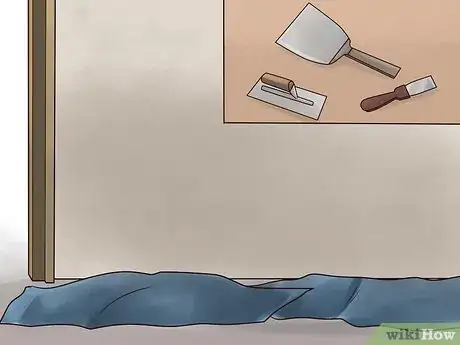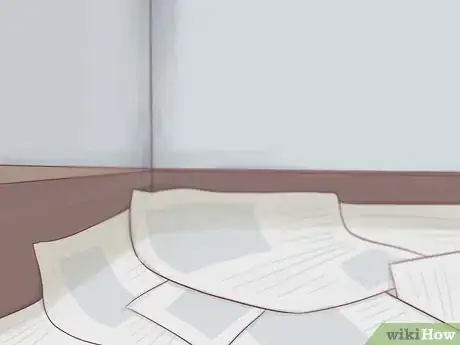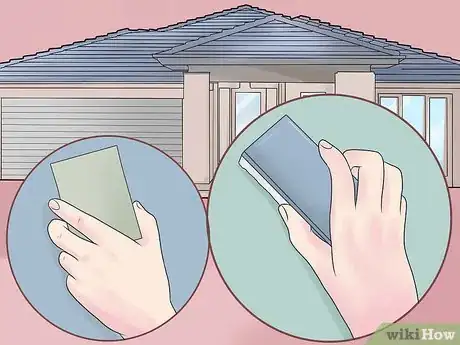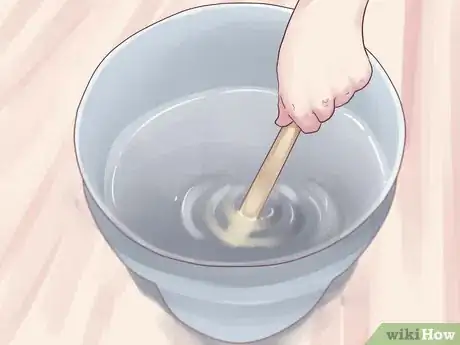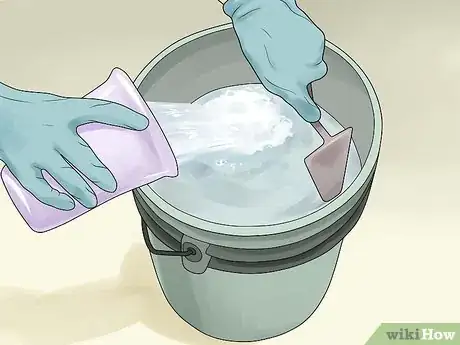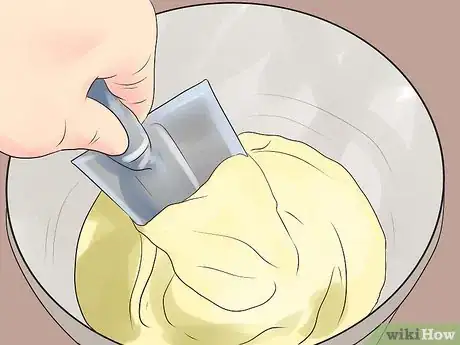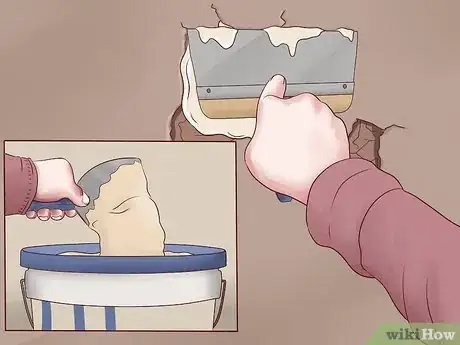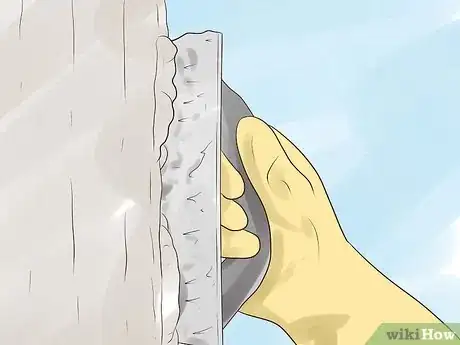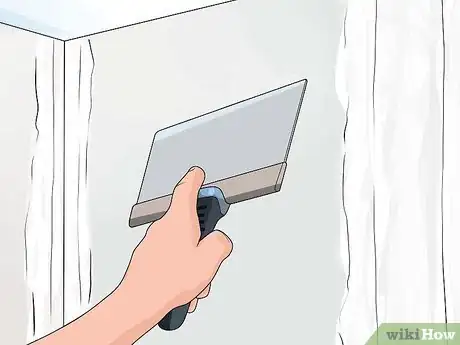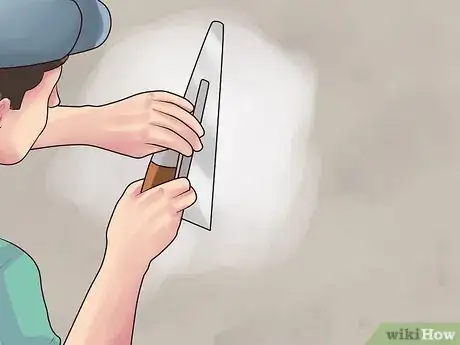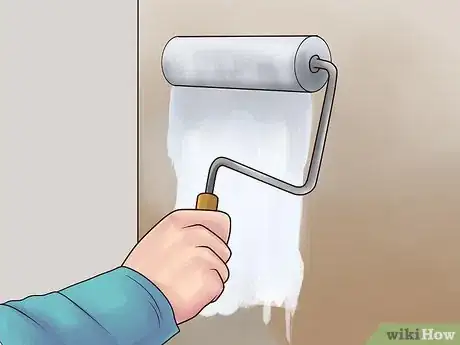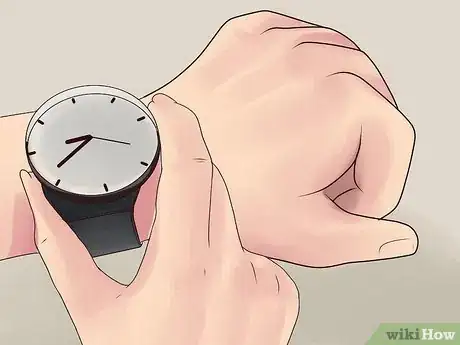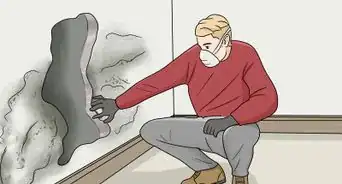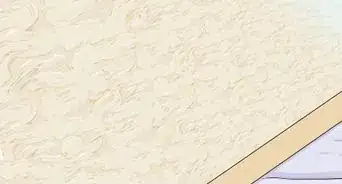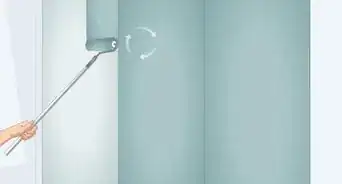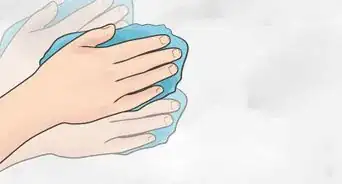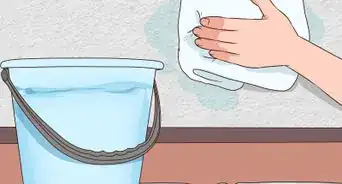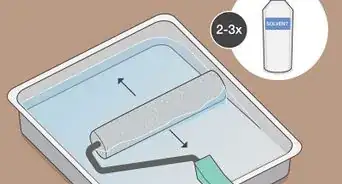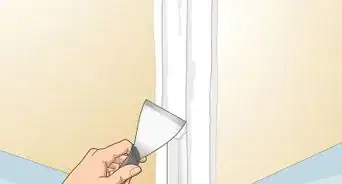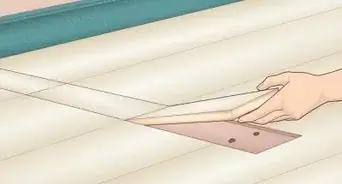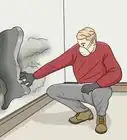This article was co-authored by Nick Yahoodain. Nick Yahoodain is a General Contractor and the CEO of Advanced Builders & Contractors in Los Angeles, California. With over 16 years of experience, Nick specializes in large residential projects such as new construction, developments, major renovations, additions, and hillside construction. Advanced Builders & Contractors is a member of the BBB, is licensed by the Contractors State License Board, and is fully bonded and insured. Advanced Builders & Contractors has been featured on NBC News, Elle Decor, Architectural Digest, and Voyage LA.
There are 9 references cited in this article, which can be found at the bottom of the page.
wikiHow marks an article as reader-approved once it receives enough positive feedback. In this case, several readers have written to tell us that this article was helpful to them, earning it our reader-approved status.
This article has been viewed 229,129 times.
Plastering is one of the final steps in finishing an interior or exterior wall. While applying plaster is a highly technical process that is usually best left to professionals, any homeowner can do it themselves provided they follow a few key guidelines. First, start with a batch of thick, freshly-mixed plaster. Spread the plaster onto a clean wall with a trowel, then use a handheld float to smooth it from corner to corner. After you’ve worked out lumps and inconsistencies, the wall will be ready for paint or wallpaper.
Steps
Preparing Your Work Area and Materials
-
1Start with clean tools. One of the most important (and often overlooked) requirements of a professional plastering job is avoiding contamination. Before you begin mixing your plaster, make sure your buckets, trowels, floats, and anything else that will come into contact with the wall are spotless. If you wouldn’t be willing to eat off of it, it isn’t clean enough.[1]
- If even a small trace of plaster leftover from the previous job finds its way onto the wall, it could interfere with the plaster’s ability to stick to the wall or set properly. Use cold water, let it soak in and mix as little as possible if you want the plaster to set slowly. Use hot water and mix a lot if you want the plaster to set very fast.
-
2Lay out drop-cloths to keep your work area clean. Some cheap canvas sheeting or a couple plastic tarps will provide a barrier against dust, spills, and muddy mortar footprints. Plastering can get pretty messy, so this simple measure can spare you an exhaustive cleanup process later on. Plaster is hardest to clean off dark walls because you will have to wash of any plaster that dropped with rags and water later.[2]
- Plaster can also damage or scratch wood or laminate floors, so be sure to cover your floors well.
- For airtight protection, use painter's tape to secure the dropcloth directly to the floor beneath the wall.
- When you're finished, just roll up the drop-cloths, take them outside, and spray them clean.
- The biggest cause of plaster falling off of the tools is mixing in too much water. As you get better, you will drop less plaster, you will get less on your hands and cleanup will be less.
Advertisement -
3Clean the wall to remove dust and debris. Scrub the wall from top to bottom with a dry stiff-bristled brush. Pay particular attention to the areas with heavy buildup, or where stripped layers of old plaster have left behind clumps. When you’re done, wipe the wall with a damp cloth to pick up what you loosened with the brush.
- Prime over stained areas to ensure the plaster will adhere properly.
- Repair any cracks in the wall before plastering it.
- Make sure the wall and ceilings are plumb and flush before you start plastering. Otherwise, there may be bumps and indentations on the finished wall.[3]
- To test whether the wall is ready to accept new plaster, run your finger over the surface. If it comes away caked with dust, it still needs some work. Spraying the wall with water will help the new plaster to adhere to the old wall.
- You should always begin by cleaning your work surface, whether you’re resurfacing an old wall or plastering over brand new lath. Dust, soap, oil, tar and mold all cause the plaster not to adhere to the surface. Also a wall that is too dry causes the water to be absorbed out of the plaster and set before it has time to stick to the wall.
-
4Brush on PVA glue to prepare the wall to hold the plaster. Combine one part PVA glue with four parts water in a disposable paint tray and mix thoroughly. Roll or brush the PVA over the entire wall, aiming for total coverage. For best results, the plaster should be applied while the PVA coat is tacky but not completely dry.[4]
- PVA glue is necessary to help the new plaster adhere to the wall.
- A preliminary coat will also prevent the substrate from leaching moisture from the plaster, which can cause crumbling.
-
5Mix your plaster in a 5 or 7 gallon (18.9 or 26.5 L) (19-26L) bucket. Fill the bucket to the halfway mark with cool, clean water. Open a new bag of plaster mix and shake it into the bucket until it forms a mound above the surface of the water. Then, use a plunger or stirring rod to begin incorporating the dry plaster particles.
- Always add the plaster mix to the water, not the other way around. If you add water to the plaster, you will have to apply pressure to mix the plaster at the bottom of the pail and you will over-mix the plaster and it will set too fast to work with. Stir the mixture as you add in the plaster.
- An electric drill with a paddle attachment can save you a lot of time if you're mixing up large or multiple batches. You must know that mixing the plaster with an attachment on your drill will cause the plaster to set much faster. Use the attachment for large jobs, where you will apply a lot of plaster in a short amount of time. If you are doing small patch-work, use a smaller bucket and mix by hand so that the plaster will set slower and give you time to work.
-
6Stir the plaster continuously to thicken it. Keep mixing until it's perfectly smooth and free of lumps. Every now and then, scrape the sides of the bucket to loosen any clinging dry pockets. By the time you're finished, the plaster should be roughly the same consistency as peanut butter.[5]
- A good way to determine whether the plaster is thick enough is to stick a wooden paint stirrer straight down into the bucket. If it stands up on its own, it means your plaster is just right.[6]
Applying the First Coat of Plaster
-
1Heap some fresh plaster onto your hawk board. Scoop the plaster out of the bucket with the edge of your trowel. If you’ve transferred the plaster to a separate surface, like a tarp or mixing table, you can simply drag it straight onto the hawk. Pile it on so you won’t be forced to interrupt your flow to add more.[7]
- When properly mixed, the plaster shouldn’t stick to the hawk. If you want, however, you can wet the hawk slightly to help it release.
-
2Use your trowel to ready a small amount of plaster. Slide the flat edge of the trowel under one end of the plaster and pick up enough to layer on a strip from floor to ceiling. To ensure accuracy and efficiency, make sure the plaster is sitting directly in the center of the trowel.
- Start with a conservative amount of plaster and add more as needed. It’s much easier to build the coat as you go than it is to even out an oversized glob.
-
3Smear the plaster onto the wall, starting with the bottom corner. Crouch down and push the plaster up the wall in a gentle arc, standing as you go to reach the higher parts. At the top of your stroke, slide the trowel over 2-3 inches (5-8cm), then reverse the motion and bring it down again. You’ll use this same technique to smooth on the plaster a little at a time.[8]
- If the plaster is soft and slides down a little on the wall, let it set 5 minutes to harden a little, then hit it with the trowel again and it will not slip.
- Keep your trowel at a slight angle. Holding it flush can pull plaster away from the wall.
- For the first coat, aim for a thickness of roughly 3/8” (1cm).[9]
-
4Plaster the wall in sections. Continue working your way along the wall, spreading the plaster from bottom to top. Pause as needed to scoop more plaster onto your hawk board. Repeat this pattern until the plaster has been spread evenly over the entire surface.[10]
- You may need a step ladder to hit the upper corners of the wall.
- Don’t worry too much about getting the thickness perfect at this point. You’ll be going back over the plaster later to smooth and polish.
-
5Smooth the first coat of plaster. Once the plaster is in place, clear your trowel and run it over the wall in all directions. Apply a consistent amount of pressure, focusing on spots where the plaster is thicker or the higher edges have created seam. Imagine that you’re icing a cake—each sweep should leave the surface more polished and level.[11]
- If necessary, use a spray bottle to re-wet the first sections of plaster. This will make them respond better to the trowel.[12]
- A wet high-quality paintbrush can come in handy for touching up tricky edges and corners.
-
6Scrape the plaster to add texture before adding the second coat (optional). Consider scoring the wet plaster to create a better base for the second coat. Rake the plaster vertically from one end to the other with a deviling float or notched trowel. Now that you’ve given the rest of the plaster something to hold onto, you won't have to worry about it cracking or separating.[13]
- If you don’t have access to either of these tools, you can also use an ordinary fork, though this may take quite a bit longer.
- Scoring creates shallow grooves that increase the overall surface area of the wall and allows the second coat to adhere better.[14]
Spreading and Polishing the Finish Coat
-
1Spread on a second and final coat of plaster. The outer “skim” coat can also be around 3/8”, though you can get away with a layer as thin as 1/12”, or about 2mm. Apply this coat exactly as you did the first, making sure there are no obvious gaps or seams.[15]
- You can smooth the skim coat with your trowel or trade it out for a float to take care of the finishing touches.
-
2Use a float to get an even finish. Glide the float lightly over the surface of the wet plaster in all directions to work out any lumps, lines, holes, and inconsistencies in thickness. When you’re done, the wall should have a smooth, uniform appearance.[16]
- Take your time. Smoothing plaster is a painstaking task, but one that is important to do correctly.
- Be careful not to polish the plaster too much. Eventually, it will begin to take on a glossy quality, which can weaken the hold of paint and wallpaper.
-
3Allow the plaster to set. Depending on various conditions, plaster can take anywhere from 2-5 days to fully harden. Avoid handling the fresh plaster as it dries. Any imperfections it picks up during this time will be visible in the finished wall.[17]
- Factors like the composition of your plaster, the temperature of your work area, and the amount of moisture in the air can all have an impact on drying times.
- The wall should be totally dry before you add paint, wallpaper, or any other decorations.
Expert Q&A
Did you know you can get expert answers for this article?
Unlock expert answers by supporting wikiHow
-
QuestionIs there anything important to know before I start plastering?
 Nick YahoodainNick Yahoodain is a General Contractor and the CEO of Advanced Builders & Contractors in Los Angeles, California. With over 16 years of experience, Nick specializes in large residential projects such as new construction, developments, major renovations, additions, and hillside construction. Advanced Builders & Contractors is a member of the BBB, is licensed by the Contractors State License Board, and is fully bonded and insured. Advanced Builders & Contractors has been featured on NBC News, Elle Decor, Architectural Digest, and Voyage LA.
Nick YahoodainNick Yahoodain is a General Contractor and the CEO of Advanced Builders & Contractors in Los Angeles, California. With over 16 years of experience, Nick specializes in large residential projects such as new construction, developments, major renovations, additions, and hillside construction. Advanced Builders & Contractors is a member of the BBB, is licensed by the Contractors State License Board, and is fully bonded and insured. Advanced Builders & Contractors has been featured on NBC News, Elle Decor, Architectural Digest, and Voyage LA.
General Contractor
Warnings
- In many ways, working with plaster is a race against time. You’ll need to work carefully to avoid making mistakes, but not so slowly that the plaster begins to dry before you’re finished.⧼thumbs_response⧽
- Do your best to get it right the first time. A botched plaster job can be very expensive to repair.⧼thumbs_response⧽
Things You'll Need
- Plaster mix
- Plaster hawk
- Flat steel trowel
- Plastering float
- Stiff-bristled brush
- Disposable paint tray
- Paint roller
- Paint brush (optional)
- PVA glue
- 5-7 gallon (19-26L) bucket
References
- ↑ https://www.bidvine.com/articles/how-to-plaster/
- ↑ https://www.thisoldhouse.com/how-to/how-to-repair-plaster-walls
- ↑ Nick Yahoodain. General Contractor. Expert Interview. 6 October 2020.
- ↑ http://www.buildingmaterials.co.uk/knowledge/how-to-plaster-a-wall/
- ↑ https://www.youtube.com/watch?v=SAYEA94brfs&feature=youtu.be&t=66
- ↑ https://www.bidvine.com/articles/how-to-plaster/
- ↑ https://www.thisoldhouse.com/how-to/how-to-plaster-wall
- ↑ http://www.buildingmaterials.co.uk/knowledge/how-to-plaster-a-wall/
- ↑ https://www.bobvila.com/articles/462-how-to-rebuild-a-wall-with-three-coat-plaster/#.WcP00siGPIU
- ↑ https://www.thisoldhouse.com/how-to/how-to-plaster-wall
- ↑ http://www.nytimes.com/1981/01/04/nyregion/home-clinic-how-to-get-a-professionallyf-smooth-plaster-finish.html
- ↑ https://www.bobvila.com/articles/462-how-to-rebuild-a-wall-with-three-coat-plaster/#.WcP00siGPIU
- ↑ http://www.buildingmaterials.co.uk/knowledge/how-to-plaster-a-wall/
- ↑ https://www.bobvila.com/articles/462-how-to-rebuild-a-wall-with-three-coat-plaster/#.WcP00siGPIU
- ↑ http://www.buildingmaterials.co.uk/knowledge/how-to-plaster-a-wall/
- ↑ http://www.free-ed.net/free-ed/Resources/Trades/carpentry/Building01/default.asp?iNum=1403
- ↑ https://www.bidvine.com/articles/how-to-plaster/
About This Article
Before plastering a wall, clean the wall to remove any dust or debris. Once your wall is clean, combine 1 part PVA glue with 4 parts water and brush the mixture on the wall to prepare it to hold the plaster. Next, fill a 5-7 gallon bucket halfway with cool water, pour in plaster mix until it forms a mound above the surface of the water, and stir the mixture well. Then, scoop the plaster up with the edge of your trowel, smear it on the bottom corner of the wall, and start pushing it up in a gentle arc to spread and smooth it out. For more tips from our Handyman reviewer, including how to spread on a second and final coat of plaster, keep reading!
